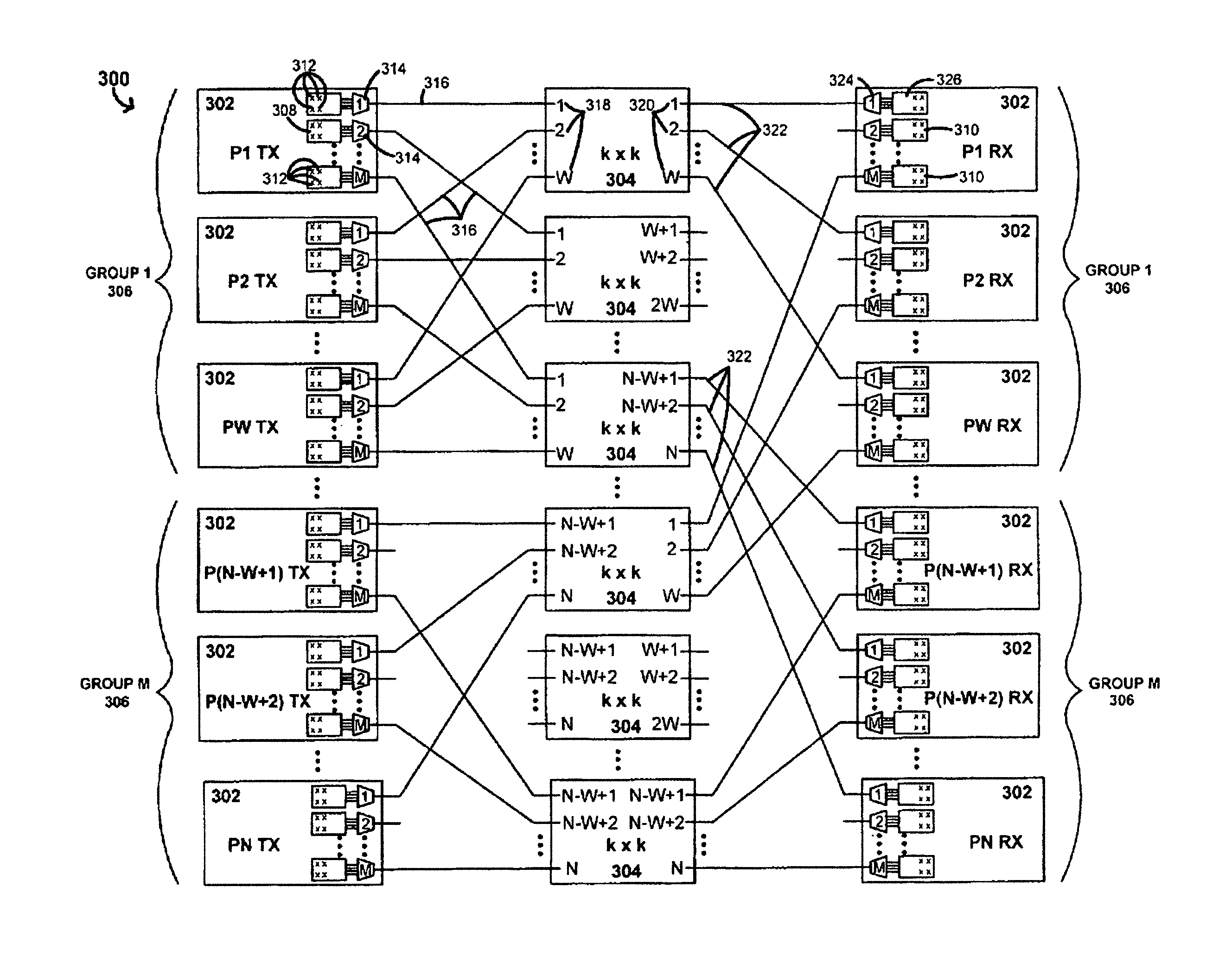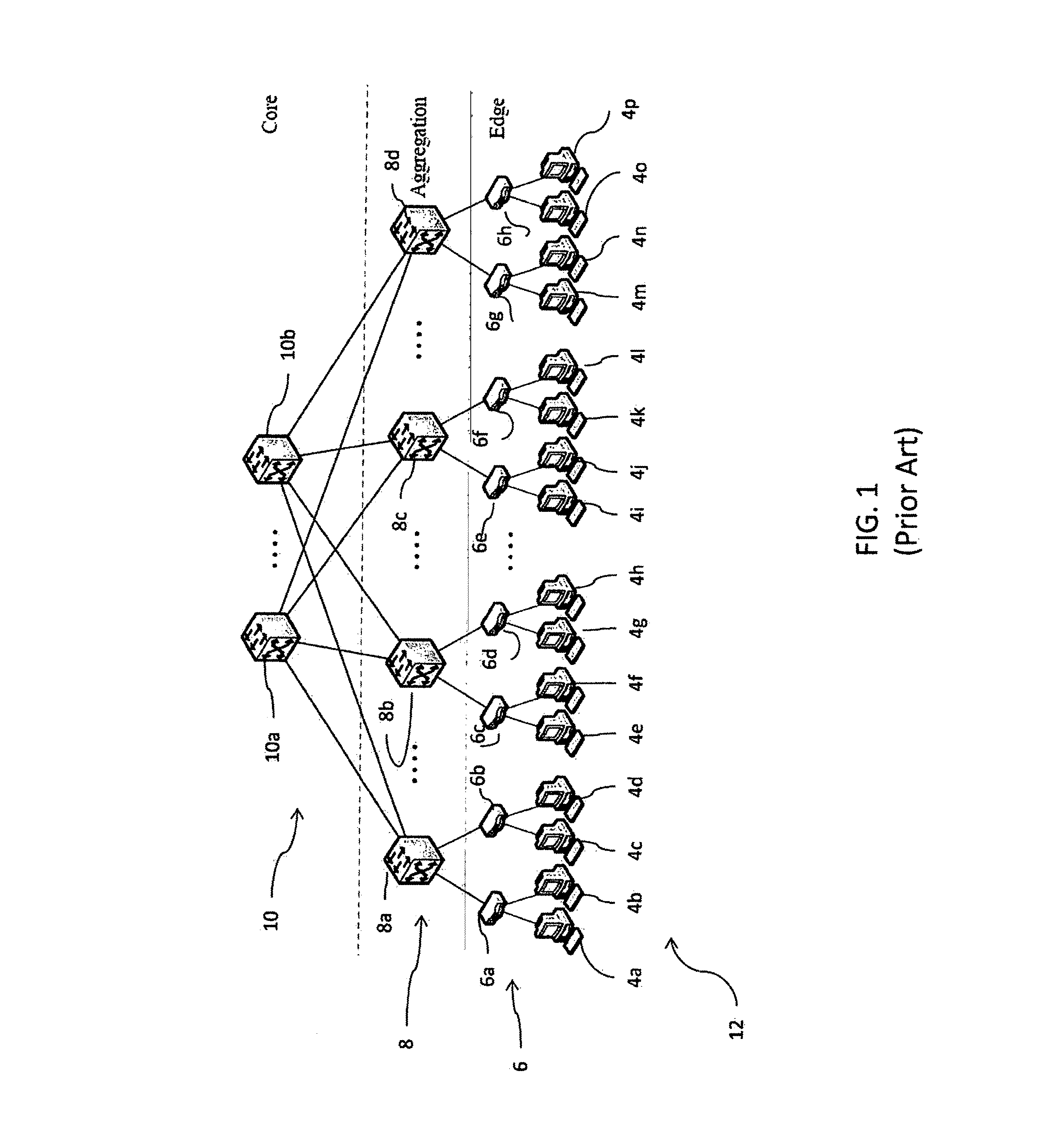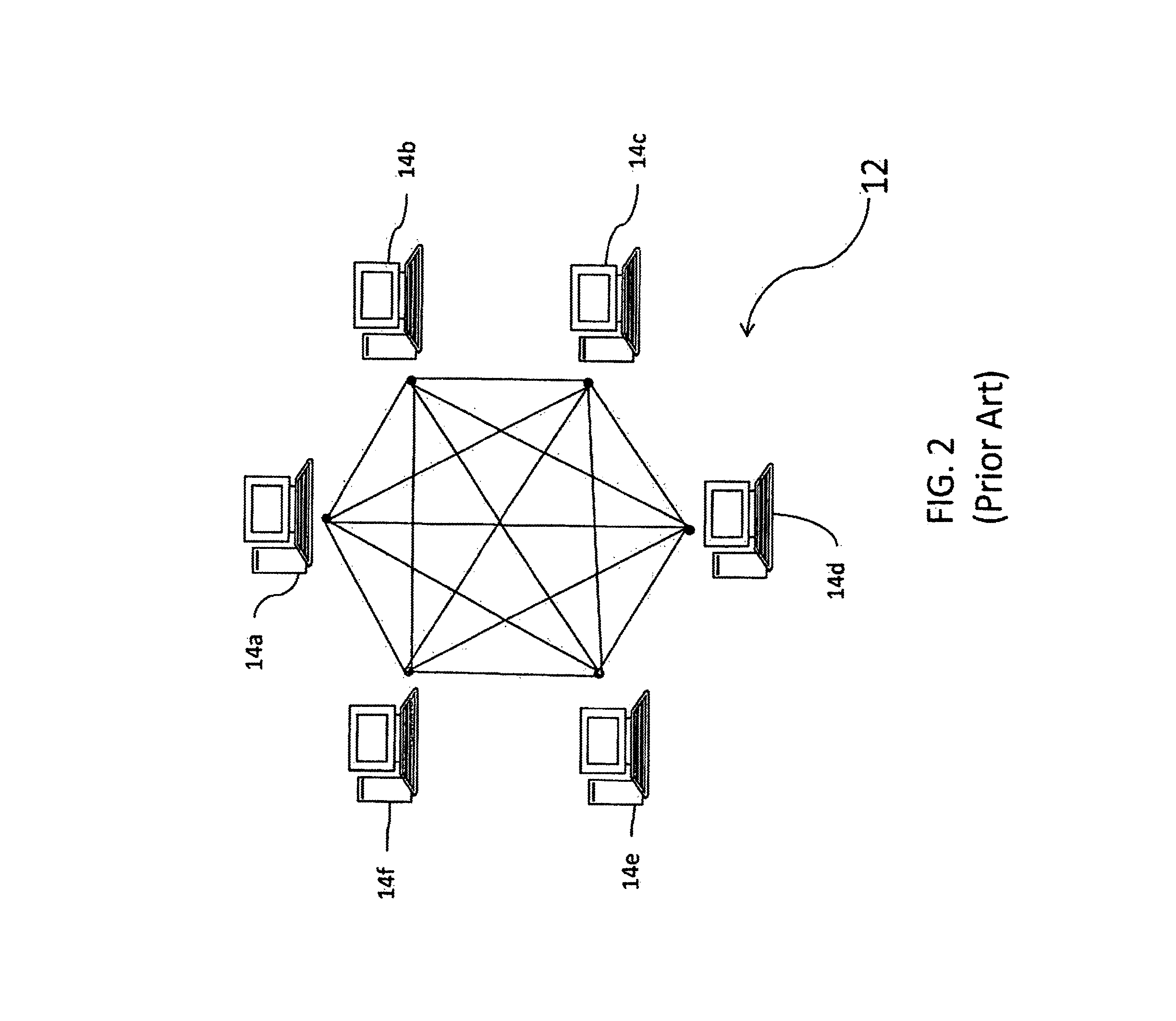Limited wavelength all-to-all wavelength routing network configuration
a network configuration and all-to-all wavelength technology, applied in data switching networks, wavelength-division multiplex systems, multiplex communication, etc., can solve the problems of increasing the latency of the network, affecting the efficiency of the network, etc., to achieve the effect of small input and output port counts
- Summary
- Abstract
- Description
- Claims
- Application Information
AI Technical Summary
Benefits of technology
Problems solved by technology
Method used
Image
Examples
Embodiment Construction
[0022]While the invention may be susceptible to embodiment in different forms, there is shown in the drawings, and herein will be described in detail, specific embodiments with the understanding that the present disclosure is to be considered an exemplification of the principles of the invention, and is not intended to limit the invention to that as illustrated and described herein.
[0023]The network 300 of the present invention is illustrated in FIG. 4. The network 300 includes N nodes 302 for which all-to-all connection is provided utilizing AWGRs 304. The nodes are identified in FIG. 4 as P1-PN. The nodes 302 represent, for example a processing element along with memory and a network interface (e.g. a computer, blade, or rack), and a WDM optical interconnect link including a transmitter and a receiver. Each node 302 could also represent, for example, a group of nodes in a hierarchy or a storage cluster. Alternatively, each node 302 could represent different types of processing ele...
PUM
 Login to View More
Login to View More Abstract
Description
Claims
Application Information
 Login to View More
Login to View More - R&D
- Intellectual Property
- Life Sciences
- Materials
- Tech Scout
- Unparalleled Data Quality
- Higher Quality Content
- 60% Fewer Hallucinations
Browse by: Latest US Patents, China's latest patents, Technical Efficacy Thesaurus, Application Domain, Technology Topic, Popular Technical Reports.
© 2025 PatSnap. All rights reserved.Legal|Privacy policy|Modern Slavery Act Transparency Statement|Sitemap|About US| Contact US: help@patsnap.com



